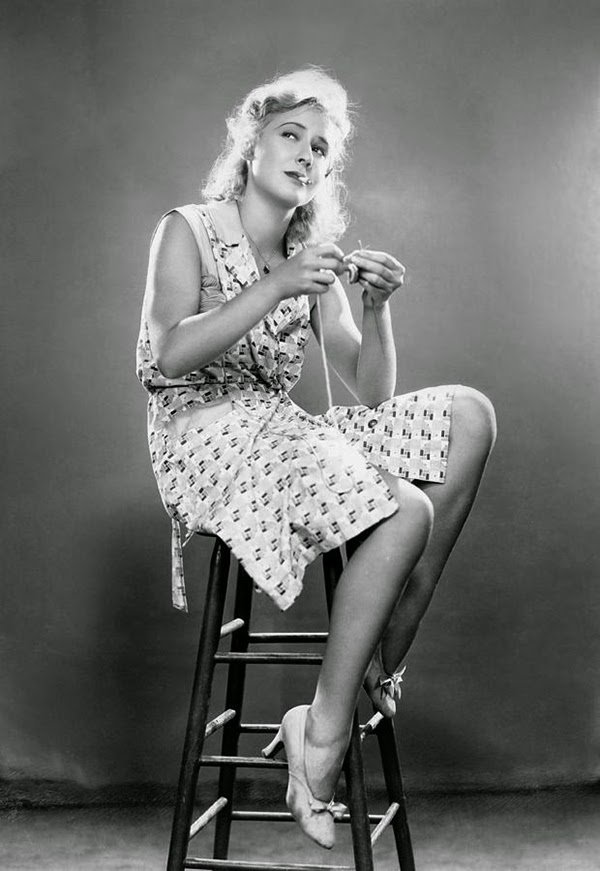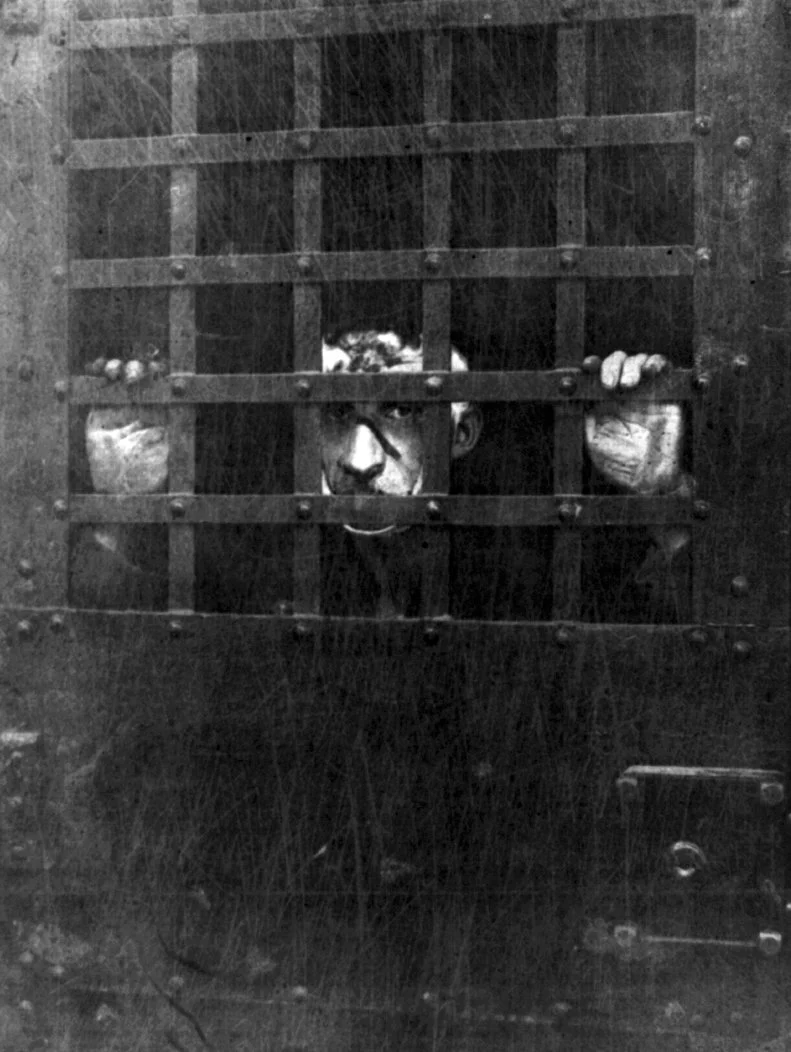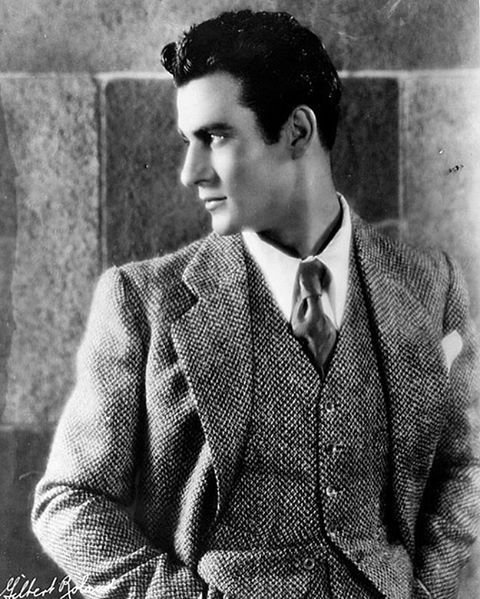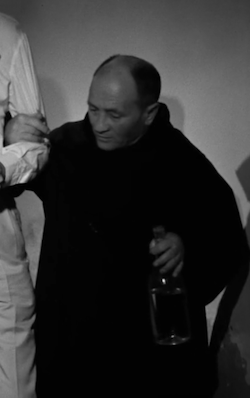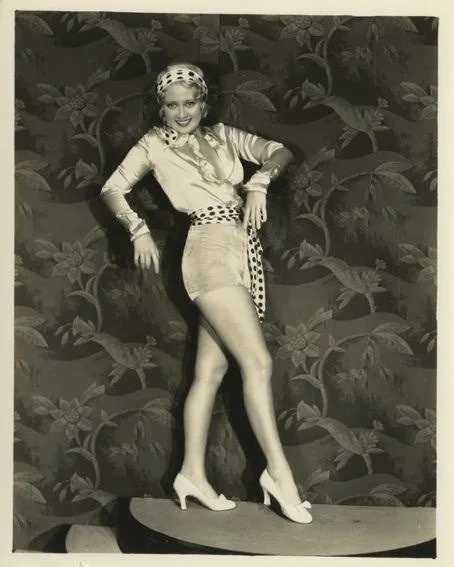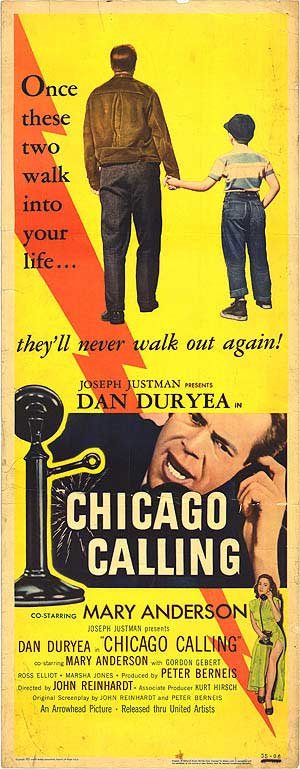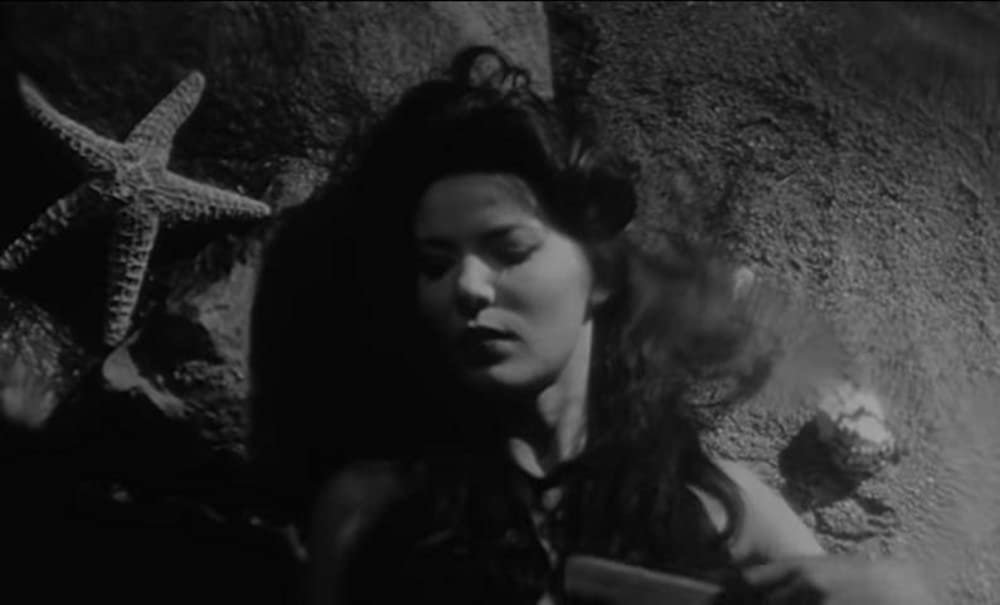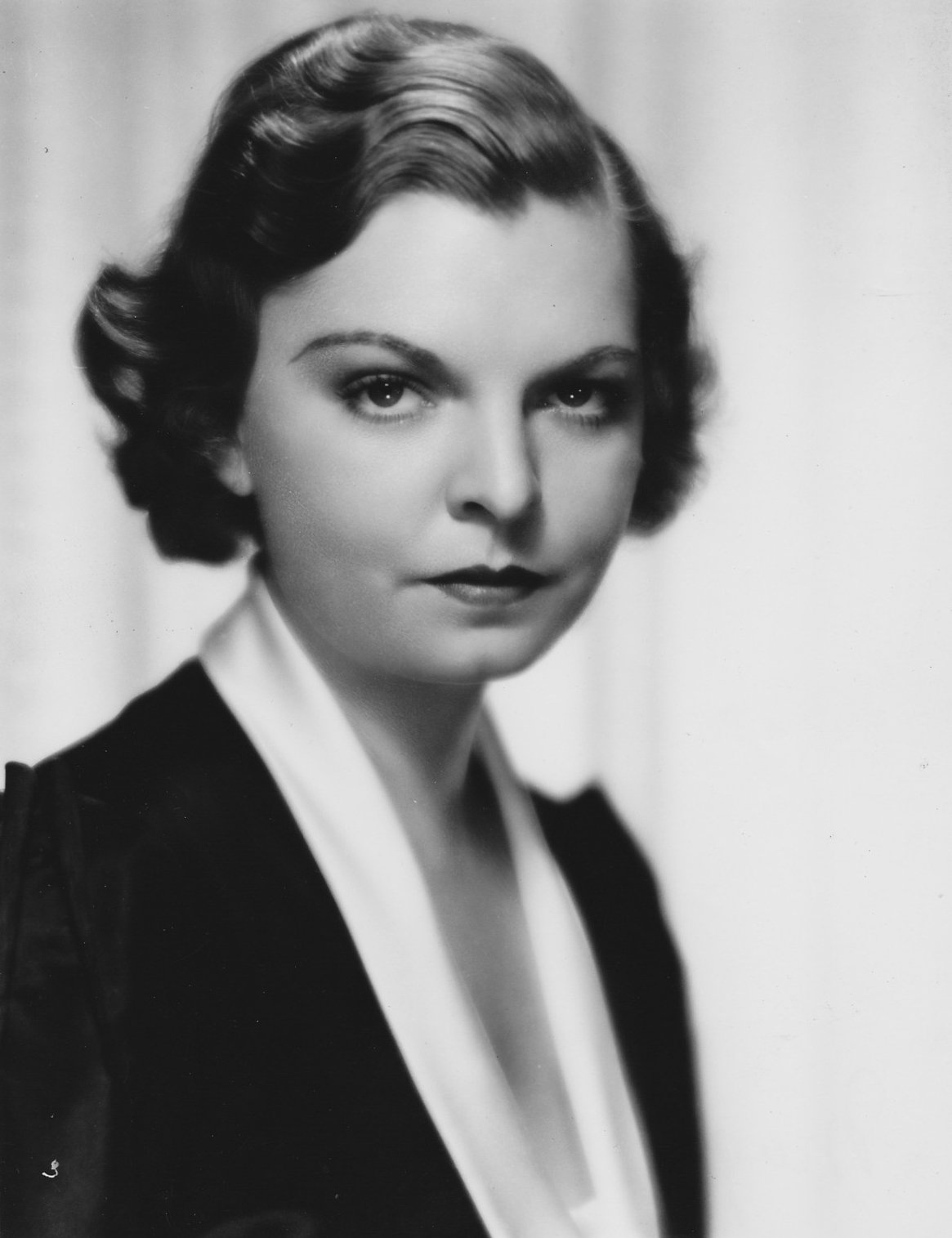Self-Indexing and Shifting Spectators in Varda’s Vagabond
Adapted from a lecture given at the Filmmuseum Pottsdam, July 6, 2016.
It’s unfortunate that Agnès Varda only began to assume the status of a major filmmaker after her husband died and she became known as the custodian of Jacques Demy’s precious legacy. Prior to that, she was mainly known, affectionately but somewhat condescendingly, as a sort of mascot of the French New Wave whose public profile remained almost as superficial as that of her eponymous heroine in Cleo from 5 to 7 (1962). And the troubling, ironic sting at the end of La Bonheur (1965) tended to be either misunderstood or ignored. Thanks to the diversity of her films, stylistic and otherwise, she was easy to overlook due to her reluctance to brand herself, unlike her male colleagues.
Mae Clarke: An Honest Woman
There is a certain look of wary, contained bitterness that you see on women’s faces in movies from the early thirties. Their eyes become veiled; the women seem to retreat inside themselves defensively, tasting memories of hurt and humiliation, of men who made them feel dirty and how they had to keep on smiling and flirting so they could pay the rent on their drab hall rooms and buy their automat coffee. It’s the look of the chorus girl who has learned to protect herself by shutting down the gates, even while wiggling in her scanties. Barbara Stanwyck carried it throughout her long career, like an eternally livid scar; “bubbly” Joan Blondell wore it quietly; and in Waterloo Bridge (1931) it’s branded on the face of Stanwyck’s one-time roommate, Mae Clarke.
Waterloo Bridge opens with a shorthand summation of a chorus girl’s life. It’s the all-hands-on-deck finale of a fluffy musical revue on the last night of its run. The camera pans past the interchangeable faces of the chorines in their platinum wigs and sparkly tricorn hats, and comes to rest on Mae Clarke, as Myra Deauville. She throws up her arms and gives an open-mouthed laugh, then lapses into exhausted boredom, then switches on the faux exuberance again, then yawns. Throughout the film she keeps doing this: putting on her game “Hello, big boy” act and then flinging it aside with furious disgust. Director James Whale doesn’t bother with transitions, but conveys the whiplashing ups and downs of his heroine’s life through blunt cuts. We see her backstage in her bra, receiving a white fox stole from an admirer; in the next scene, out of work for two years, she’s wearing the stole low around her décolletage, standing outside the theater with a fellow hooker looking for pickups. (The setting is World War I, but when Myra says hopefully, “I’ll get a job soon,” 1931 audiences must have foreseen the worst.)
Spotting a prospective john, the friend primps and smiles flirtatiously, while Myra turns on him with a defiant yet seductive scowl; a sullen, defensive stance that she assumes throughout the film. She suffers from incurable decency, which becomes a scalding torment when she meets an innocent young doughboy who has no idea that she’s a prostitute. She brings Roy (Kent Douglass) to her flat, intending to pluck him for the back rent she needs to satisfy her sour-faced landlady. But it’s too easy: when the sweet, boyish soldier pleads with her to accept the money, she abruptly drops the good-natured frankness she’s been charming him with and turns hard and caustic, hating him because she hates herself for tricking him. She’s so stung with hurt pride that she has to lash out and hurt someone else. Preparing to go out on the streets after sending him away, she stares at her hard face in the mirror, dabbing make-up on the rigid mask that barely conceals the tired, angry sadness beneath.
Waterloo Bridge is the only film that reveals the breadth of Mae Clarke’s talent. In other movies she played nice, open-faced girls or mean, petulant golddiggers. As Myra she is a kaleidoscope of confused emotions. Her best scene comes when Roy tells her he loves her: she turns away, hunched as though against a cold rain, her eyes narrow and tense. This is the final insult from life: for her dream guy to come along too late, when she feels unworthy of him. Leaving, he kisses her hand, and reacting to this tribute she passes through exaltation, anxiety, and rage—growling as she forces herself to cast it aside. She’s too honest to grab the expedient of letting a man make “an honest woman” out of her. But we know she loves him, because in the next scene she’s trying to knit him a pair of socks, sitting at the breakfast table with her hair piled on her head, a cigarette planted in her mouth, mangling the stitches.
The worst is yet to come: well-meaning oblivious Roy tricks her into visiting his posh family in the country. They’re kind and welcoming in that self-satisfied upper-class way bound to cause excruciating discomfort in someone like Myra. Roy’s mother (Enid Bennett) is polite, complacent and deadly. Watching her sweetly confide to Myra that she doesn’t want her son to marry a chorus girl, but that she knows she has nothing to fear from such a “fine” person, is almost unbearably painful. Reduced to abject guilt, Myra confesses her true profession and pitifully sobs, “I just wantcha to know, I could’ve married him…”
The House of D
As one of his final acts in office, Mayor Jimmy Walker broke ground in 1932 for the New York City House of Detention for Women, built on the site of the old Jefferson Market jail in Greenwich Village and colloquially known as the House of D. According to sociologist Sara Harris’ Hellhole (on John Waters’ list of recommended reading), It was intended as a model of prison reform. Opened in 1934, the twelve-story monolith of brownish brick with art deco flourishes loomed behind the old Jefferson Market courthouse on Sixth Avenue, looking more like a stylish if somewhat cheerless apartment building than a prison. Windows were meshed instead of barred, and the one sign on its exterior merely gave the address, “Number Ten Greenwich Avenue.” There were toilets and hot and cold running water in all four hundred cells, and it was going to focus on rehabilitating its inmates – prostitutes, vagrants, alcoholics and/or drug addicts – rather than merely punishing them. From the start the reality was at variance with the intentions, and the facility quickly became infamous as a combination of Bedlam and Bastille. Within a decade it was chronically overcrowded with a volatile mix of inmates: women who couldn’t make bail awaiting trials that were sometimes months off, women already convicted and serving time, alcoholics and addicts, the mentally ill, violent lesbian tops, street gang girls, hookers and other lifelong multiple offenders, and teenagers spending their first nights behind bars. Tougher, more experienced prisoners brutalized and sexually assaulted the weak and inexperienced. So, of course, did the staff. The halls rang with the howls of inmates suffering the agonies of drug or alcohol withdrawal. There were cockroaches and mice in the cells and worms in the food. Village lesbians called it the Country Club and the Snake Pit. The IWW organizer Elizabeth Gurley Flynn did time in the House of D, as did accused spy Ethel Rosenberg and Warhol shooter Valerie Solanas. In 1957, Dorothy Day, founder of the Catholic Worker movement, spent thirty days there for staying on the street during a civil defense air raid drill. Her ban-the-bomb supporters picketed outside every day from noon to two; the Times called them “possibly the most peaceful pickets in the city.”
Great Zilches of History
Film is light. There are times, though, when that light may take on a Stygian cast, burning with a flamme noire severity, a weird and otherworldly keenness. Or it may burn lurid and loud — especially if it’s a very old film, acting like a séance that summons the unruly dead. The darkness in cinema best typified by that form we call film noir is in its essence an extension of the peculiarly American darkness of Edgar Allan Poe.
Amigo Gigolo: Gilbert Roland
In 1905, in Ciudad Juáraz, Chihuahua, Mexico, a bullfighter and his wife gave birth to a son, Luis Antonio Dámaso de Alonso. Young Luis intended to become a bullfighter just like his father, but when the family moved to California, he fell into acting after being cast as an extra in the Lon Chaney version of The Hunchback of Notre Dame (1923). Two years later, Ben Schulberg at Paramount studios cast the 20-year old Luis opposite Clara Bow in a college comedy, The Plastic Age, where he was first billed as Gilbert Roland. He had the sort of looks that seemed different from different angles: romantic in profile, but somewhat shifty when he was seen full face with his eyes narrowed. When he opened his eyes wide, however, their greenness had a heart-stopping effect, even in black and white films. Many of his leading ladies took notice.
The Invisible Border: “The Man Between”
“Wickedness,” Oscar Wilde wrote, “Is a myth invented by good people to account for the curious attractiveness of others.” Both The Third Man (1949) and The Man Between (1953), a film that suffers from perennial unfavorable comparison to Carol Reed’s earlier masterpiece, revolve around men whose attractiveness is inseparable from their amorality. But while Grahame Greene’s script for The Third Man ultimately strips away Harry Lime’s glamour, reducing him to a scurrying sewer-rat and a suicidal nihilist, The Man Between embraces the tragic romanticism of its more ambiguous anti-hero.
Black on Black — The Three Lives of Ulderico Sciarretta
1.
There are many different shades of black. One is particularly hateful to Italian people and will never fade in the collective memory. During the Fascist regime, black was the color worn by the Italian Fascist militia, the “blackshirts”: a tint evoking violence, repression and abuse, a vision soliciting fear, but also a badge which granted power and rewards for those wearing or supporting it, either by belief or personal advantage. Born on August 26, 1906, Ulderico Sciarretta enlisted in the Fascist party at 16, in 1922, soon after the March on Rome. One might say he was quick in catching the spirit of the time. Then, as he later claimed, he had a “vocational crisis”[1] and enrolled in the navy; he did not make much of a career, though: on the contrary, he ended up on trial for violence and outrage.
In 1937 Sciarretta moved to Turin, posing as an accountant, a professional title the police advised him not to use. He set up a tax advice office which in fact was a front for other types of business, not exactly legal. Then came the September 1943 armistice: following the birth of Mussolini’s short-lived Republic of Salò in Northern Italy, Sciarretta acted as a double agent and took part in Fascist raids against the partisans, as a spy of the infamous Fascist brigade “Ather Cappelli” (one of the members was Mario Volonté, Gian Maria’s father). After the end of the war, he was arrested and taken before the Court of Assizes in Turin, together with other war criminals: he was accused of taking part in the murder of the 25-year-old Agostino Priuli, killed in December 1944 during a raid in a workshop where arms for the partisans were assembled and repaired with the steel provided clandestinely by the Lancia car plant. The newspaper La Nuova Stampa described Sciarretta as follows: “Pale, puny, skinny, he even looks sinister.”[2] A woman testified having seen him railing against dead partisans’ bodies, shouting: “Come, mothers, come and see your bandits!” During the trial, the crowd⎯largely composed of relatives of people arrested, deported, tortured or killed by the defendants⎯yelled out loud, “Give them to us!”
Glad Rags: Fashion and the Great Depression
Some years ago, in a breathtaking lapse of taste, The New Yorker published a fashion spread that aped iconic photographs of Dust Bowl migrants. I was as appalled as the next right-thinking person by the pouting models in $400 distressed cardigans pretending to thumb rides along desert highways. But if the charge is infatuation with the aesthetics of the Great Depression, I am guilty, guilty, guilty. Throw me in the clink—just so long as it resembles the hoosegow that Barbara Stanwyck saunters around in Ladies They Talk About (1932).
Why was everything, from automats to automobiles, from nightclubs to radios, from skyscrapers to bus stations, from cocktail shakers to the battered hats on homeless men, so elegant in the thirties? Why did bums back then look better than bankers today? Why are the movies and music, the clothes and every aspect of design from typefaces to elevator panels, so intoxicatingly stylish?
Poe in Cinema/Poe as Cinema
Georges Rivière is haughty. Like he smelled something bad. The script?
Here, in 1964’s Castle of Blood, playing a penurious dandy silly enough to spend the night in a haunted castle on a bet, Rivière seems to think aloofness will be all the protection he needs. It won’t be! Indeed, only one thing can save the film’s leading man from the visual shibboleths of a dying genre, and that’s the cameraman.
Camera artisan Riccardo Pallottini, playing savior and tormentor, coaxes Rivière onward while punishing his progress. Nobody would be more surprised than the late Signore Pallottini himself hearing his cinematography praised as “experimental”. And yet, this is Gothic Horror’s greatest master shot — a case of push and pull, whose tension and elasticity continue to create rebounding space 114 years after its creator’s birth: so praise it I shall.
With ace cameramen, point-of-view becomes a more problematic concept, as when George O'Brien wanders glazed through F.W. Murnau’s swamp in Sunrise. There, the camera sometimes recedes from the hero’s advance, sometimes lets him pass and follows him, sometimes loses him altogether to rediscover him later. While Castle of Blood’s cliches would seem to be the thumpingly obvious point — a door’s creaking swing illuminates a wall bristling with harnesses and cartwheels… zoom in as a black kitten abandons its lair in a piece of spangly lacework… an organ wheezes as the hero’s sputtering candle casts the impossible shadow of itself on the crumbling masonry — those same hackneyed moments synthesize utterly unexpectedly into cinema pur.
The Chiseler Interviews Jonathan Rosenbaum
The Chiseler’s Daniel Riccuito discusses pre-Code talkies, noir and leftist politics with one of America’s leading film critics.
DR: We share a common enthusiasm for early talkies. Do you have any favorite actors, writers or storylines relating to the period’s ethnic, often radically left-wing, politics? I’m thinking of the way that, say, The Mayor of Hell suddenly busts into a long Yiddish monologue. Or movies like Counsellor at Law and Street Scene present hard Left ideas through characters with Jewish, Eastern European backgrounds.
Places Are People: When the Setting is Ready for Its Close-Up
Cinema’s misspent childhood years in late-Victorian fairgrounds are followed by a grimy adolescence in Edwardian nickelodeon parlors. The medium, which finally comes of age amid gaudy palaces built in its honor, morphs many times. However, All Talking Pictures are the final death knell for the Victorian standard, belching from the screen a thousand inbred tongues that invade the ear willy-nilly. They remind us that Victoria Regina breathed her last in January of 1901, and with her passing Naturalism sheds decorum, taste, chivalry, good table manners.
Cinema grew from amusement parks, fairs, shows, an "attraction" for the rubes. And, like calling to like, the movies still nurture a fascination for such places of low pleasure.
As he shot Touch of Evil in and around Los Angeles' Venice Beach on a handful of nights in the early spring of 1957, Orson Welles would bashfully drape those trashy, less cinematic elements of the Mediterranean counterfeit before him in a voguish noir frock coat; one that would, at once, revel in the inherent ghastliness of such a place while concealing its full absurdity from eyes that would never be able to handle the contradiction.
Some years later, fate would conspire to choose Curtis Harrington, a cross-dressing Poe fanatic, to fully capture “The Slum by the Sea” with all its ravaged whimsy set against the lyric humiliation of once-ostentatious digs and the ruined face of spent oil wealth. Singularly unembarrassed by what he saw, Harrington gave audiences a Venice Beach that Welles would not: the sun-dappled occult, the queer, the criminal; a true, flophouse-ridden glory bathed in the endless California sunlight.
Night Tide (1961) assembles a distinguished skid row where underworld docents by the dozen — murderers, perverts, soothsayers and sea witches — pop into being with dazzling efficiency. Picture one thousand elves rising with glee to the same, single-minded curatorial task and you'll have a sense of what is involved here. In other words, as a demiurgic force, Harrington does not emerge from nothingness. After two decades fruitlessly bashing his head against the avant-garde wall, our schlockmeister arriviste goes Hollywood — that is, any imaginable “Hollywood” rude enough to splotch him with flat soda or leave him smelling of hot gravel and exhaust fumes.
With its hinky cast — nonfictional witch, Marjorie Cameron; erstwhile muse to surrealist filmmaker Jean Cocteau, the undersung Babette who usually appears en travesti; and lecherous, booze-addled, fresh-faced Hollywood castoff Dennis Hopper — Night Tide invades the drive-in. A tarot reading at the film’s heart gives Marjorie Eaton her time to shine, traipsing into nickel-and-dime divination from her former life as a painter of Navajo religious ceremonies. Linda Lawson might have issued from an etching by Odilon Redon, with her raven locks and spiritual eyes, our resident sideshow mermaid. Not surprisingly and despite such gentle segues, the film itself traveled a rocky road from festivals to paying venues.
Despite the film’s scant $50,000 budget and somewhat dubious standing (after all, this was the director’s first attempt at feature filmmaking), Harrington captivates well-established eminences like cinematographer Floyd Crosby (Tabu) and composer David Raksin (Laura). Their contributions are keyed with great sensitivity to the film’s teasing invitations: “Do you want to live on a black and white Venice Beach boardwalk, have breakfast with a hot sailor and a hotter mermaid, hang with an old drunk captain and listen to the strange tales behind his morbid souvenirs?” It’s worth mentioning that Truman Capote, after catching a Times Square screening, adored Night Tide. We won’t ask what he was up to in a grind-house theater, but whatever it may have been, Mr. Capote encountered the movie in its ideal environment: equal parts sub-rosa poetry and grim
Mayo Methot: More Than You Know
The sad passing of Lauren Bacall [August 12, 2014], aged 89, leads to various melancholy reflections, among them the fact that the previous Mrs. Bogart, Mayo Methot, seems now completely forgotten, remembered only as a footnote labeled “mean drunk.”
Peter Lorre, it was said, once drolly offered to demonstrate what a volatile couple Humphrey and his first spouse were, sidling past them and uttering only the words “General MacArthur.” Within a minute of this verbal depth charge being released, Methot was clawing her husband’s face open while he attempted to club his better half unconscious with a whiskey glass. But when not engaged in such charming interplay, Methot was a riveting screen personality whose appeal is more or less diametrically opposite to that of her successor.



